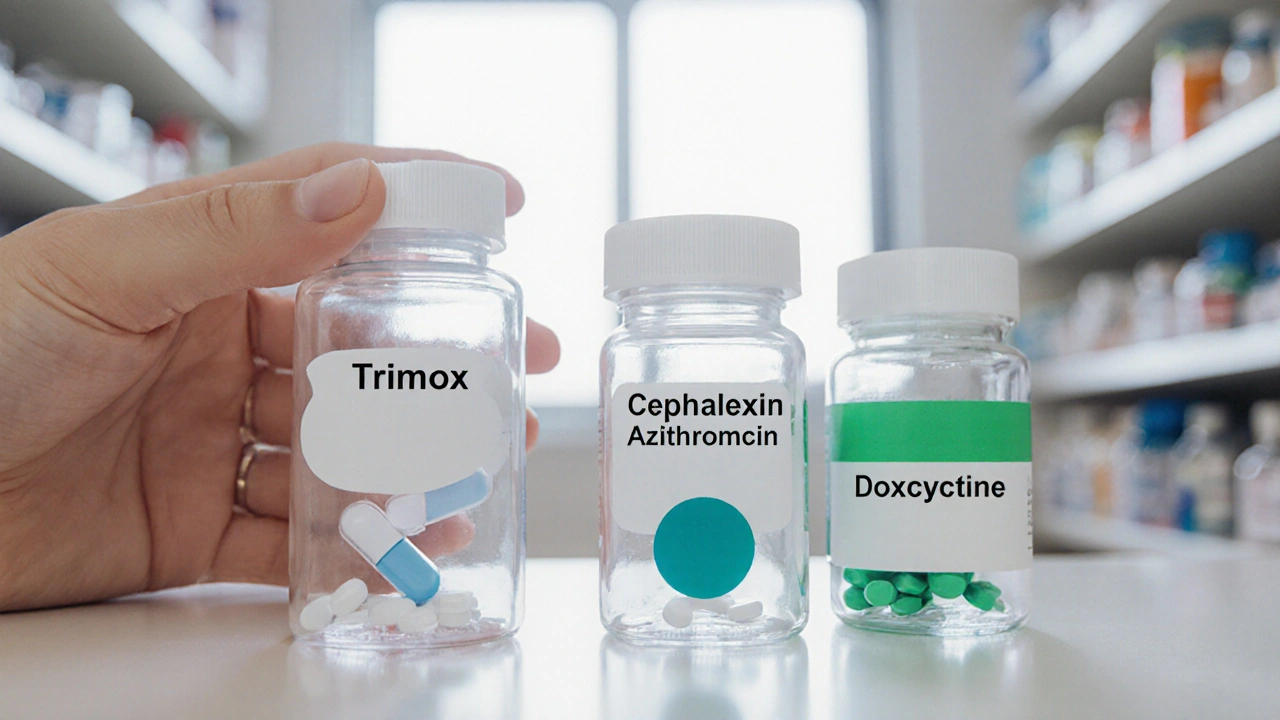Amoxicillin alternatives: Effective options when penicillin won't work
When Amoxicillin, a broad-spectrum penicillin antibiotic commonly prescribed for ear, sinus, and respiratory infections. Also known as amoxicillin trihydrate, it's one of the most widely used antibiotics worldwide doesn't work—or causes a reaction—you need a backup plan. Many people assume all antibiotics are interchangeable, but that’s not true. If you’re allergic to penicillin, switching to another penicillin-based drug like ampicillin or phenoxymethylpenicillin could trigger a serious reaction. That’s why knowing real Amoxicillin alternatives matters.
Three main classes of antibiotics step in when Amoxicillin is off the table. First, clindamycin, a lincosamide antibiotic effective against many gram-positive bacteria, including those causing skin infections and dental abscesses. It’s often chosen for patients with penicillin allergies because it works differently and rarely causes cross-reactivity. Second, doxycycline, a tetracycline antibiotic used for respiratory infections, Lyme disease, and acne, with good coverage against atypical bacteria. It’s taken once or twice daily and works well when Amoxicillin fails against stubborn infections. Third, azithromycin, a macrolide antibiotic known for its long half-life and once-daily dosing, often prescribed for bronchitis and pneumonia. It’s especially useful for people who can’t take oral penicillins due to nausea or rash.
These aren’t just random substitutes—they’re clinically validated options backed by guidelines from the CDC and IDSA. But choosing one isn’t a DIY decision. The right alternative depends on the infection type, your medical history, local resistance patterns, and whether you’ve taken antibiotics recently. For example, if you have a sinus infection caused by resistant bacteria, doxycycline might be better than azithromycin. If you’re treating a skin abscess, clindamycin often outperforms others. Your doctor won’t guess—they’ll match the bug to the drug.
You’ll also find posts here that compare other antibiotics like cephalexin (a cephalosporin sometimes used cautiously in penicillin-allergic patients) and levofloxacin (a fluoroquinolone reserved for more serious cases). Some articles dive into how diet or probiotics might help reduce side effects when switching antibiotics. Others explain why certain drugs are avoided in pregnancy or in kids. What ties them all together? Real-world choices people actually make when Amoxicillin isn’t an option.
Below, you’ll see detailed comparisons of these and other alternatives, from cost and dosing to side effects and patient experiences. No fluff. No marketing. Just what works—and what doesn’t—when you need to move past Amoxicillin.

Trimox vs Alternative Antibiotics: Detailed Comparison
A clear, side‑by‑side look at Trimox (amoxicillin) versus common antibiotic alternatives, covering uses, dosing, side effects, cost and when to choose each option.
Detail



